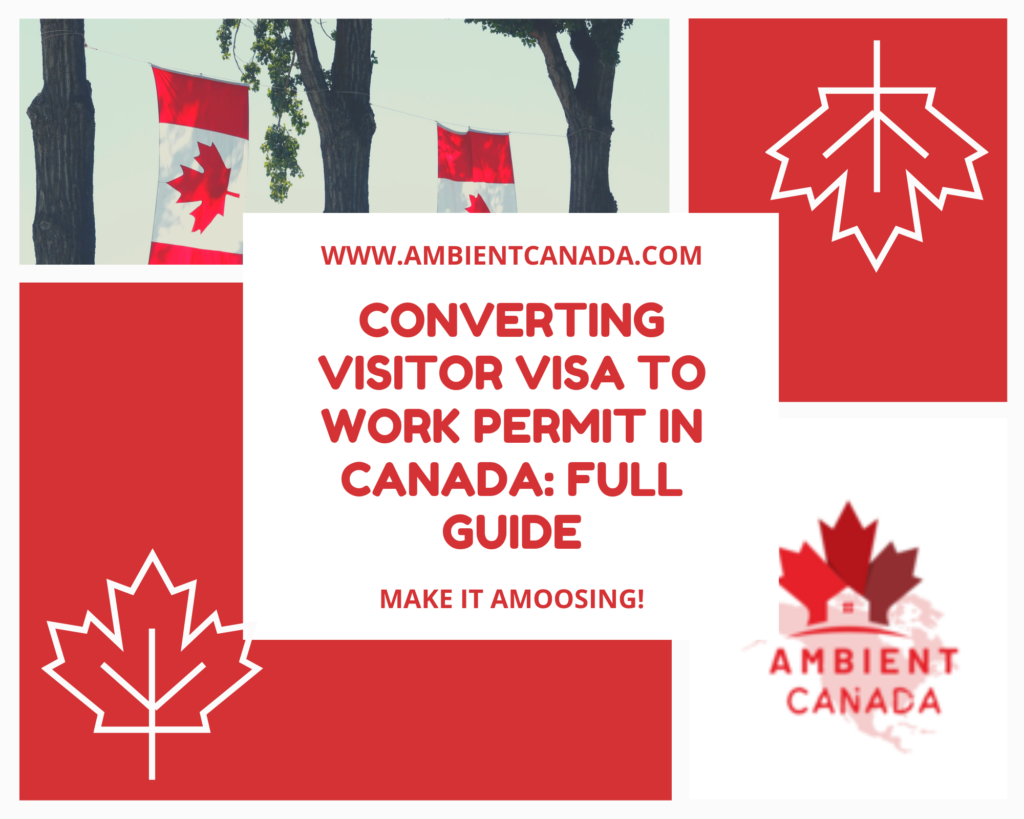Converting Visitor Visa to Work Permit in Canada: Full Guide
Navigating the process of converting a visitor visa to a work permit in Canada can be complex, but with the right information and planning, it is certainly achievable. This guide provides a comprehensive overview of the necessary steps, required documents, processing times, and associated costs, including the Labour Market Impact Assessment (LMIA) fees.
1. Visitor Visa Overview
A visitor visa allows you to enter Canada temporarily—typically for up to six months—for activities such as business meetings, vacations, or family visits. If you wish to extend your stay beyond the initial six months, you can apply for a visitor record.
2. Work Permit Overview
A work permit grants you the legal right to work in Canada. Work permits can be classified as:
- Open Work Permits: Allow you to work for any Canadian employer.
- Employer-Specific Work Permits: Tied to a specific job and employer.It is well known as Close Work Permits.
Visit Here To know Who can apply for an open work permit?
Visit Here To Get Details About A Close Work Permit?
3. Converting Visitor Visa to Work Permit
Converting a visitor visa directly to a work permit usually requires an employer-specific permit. Under the temporary public policy in effect until February 28, 2025, visitors can apply for work permits from within Canada. Here’s how:
3.1 Application Requirements
To change your visitor visa to a work permit, you must meet the following criteria:
- Job Offer and LMIA: Secure a legitimate job offer from a Canadian employer, accompanied by a positive LMIA. The LMIA demonstrates that hiring you will not negatively impact the Canadian labor market.
- LMIA Exemptions: Certain occupations, like caregivers, do not require an LMIA. In these cases, only a job offer is needed.
- Legal Visitor Status: Maintain your legal status as a visitor in Canada throughout the process until you receive your work permit.
3.2 Cost of LMIA
The employer must pay a CAD 1,000 non-refundable processing fee for each position requiring an LMIA.
4. Submitting Your Work Permit Application
After obtaining the LMIA (or a job offer for LMIA-exempt positions), you can apply for a work permit. Eligible visitors can apply online through their secure IRCC account.
Required Documents
- Job Offer Letter: Details of the position and employment conditions.
- Positive LMIA Paperwork: If applicable.
- Proof of Visitor Status: Documents confirming your current status in Canada.
- Completed Forms: IMM 5710 (Application Form) and, if relevant, IMM 5476 (Representative Use).
- Passport: Valid passport with at least one blank page.
- Photographs: Passport-sized photos meeting the requirements.
- Proof of Funds: Bank statements demonstrating your ability to support yourself.
- Medical Exam: If required, depending on your role or country of origin.
- Application Fees: CAD 155 for the work permit and CAD 85 for biometrics (if applicable).
For detailed instructions, visit the IRCC website.
5. Interim Work Authorization
If your work permit application is in process, you may apply for an “Interim Authorization to Work” from the IRCC, allowing you to start working sooner. To request this, fill out the IRCC web form and wait for confirmation, which can take up to 30 working days (6 weeks).
6. Processing Time for Work Permits
The average processing time for work permits inside Canada is approximately 92 days, according to the latest IRCC updates.
By following these guidelines and ensuring all documentation is in order, you can successfully transition from a visitor visa to a work permit in Canada. For more detailed information and to start your application, refer to the IRCC’s full instruction guide.



